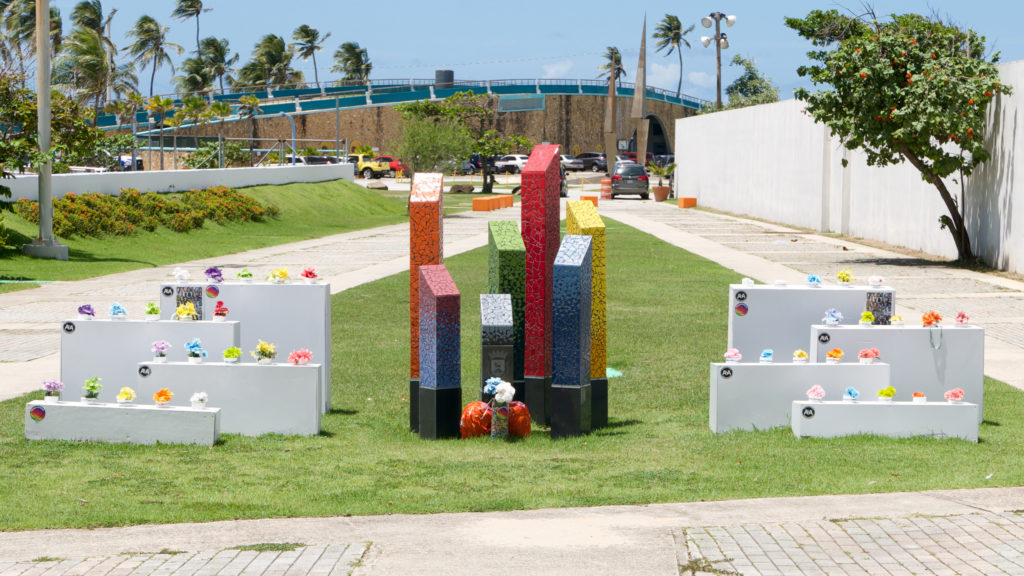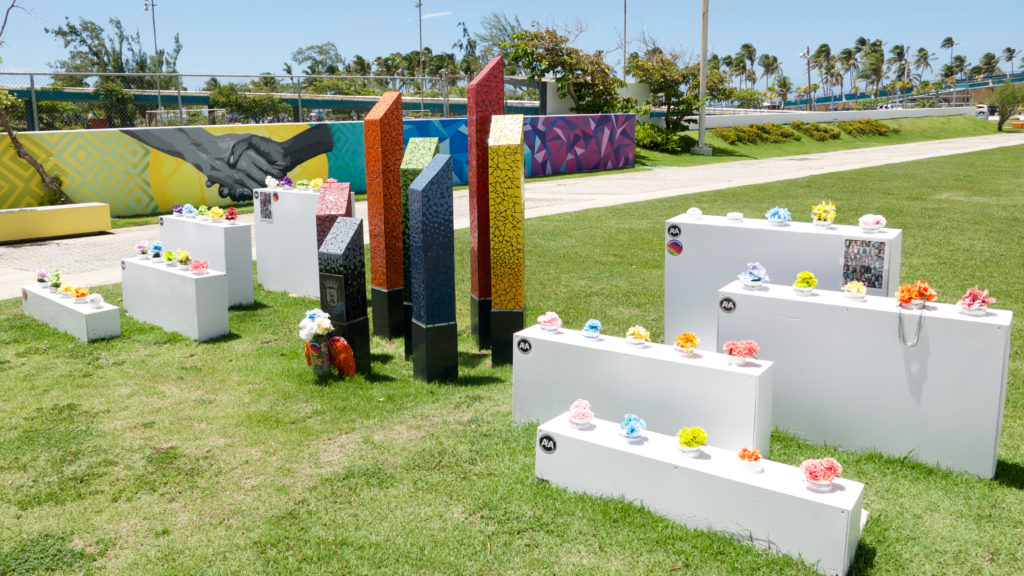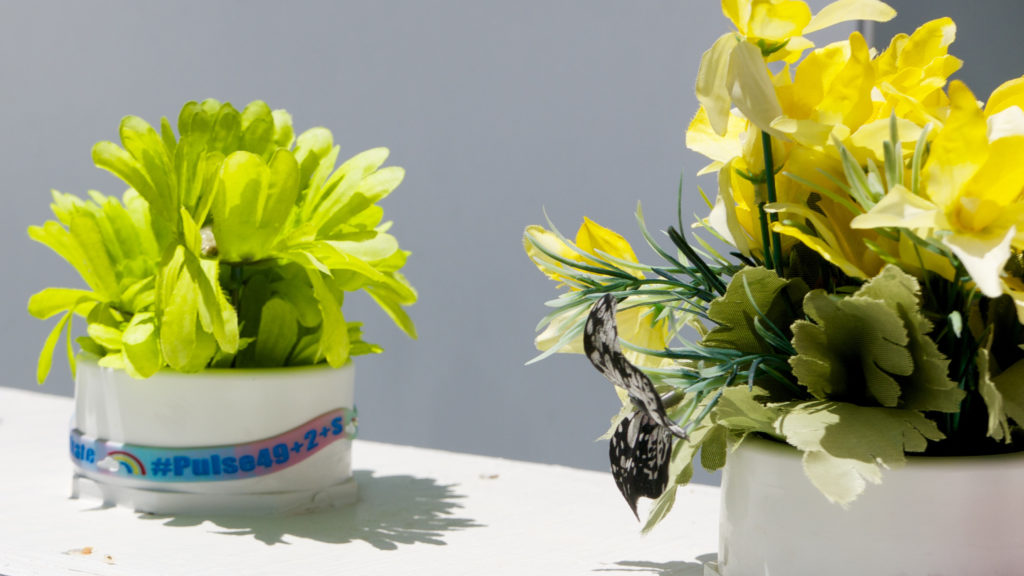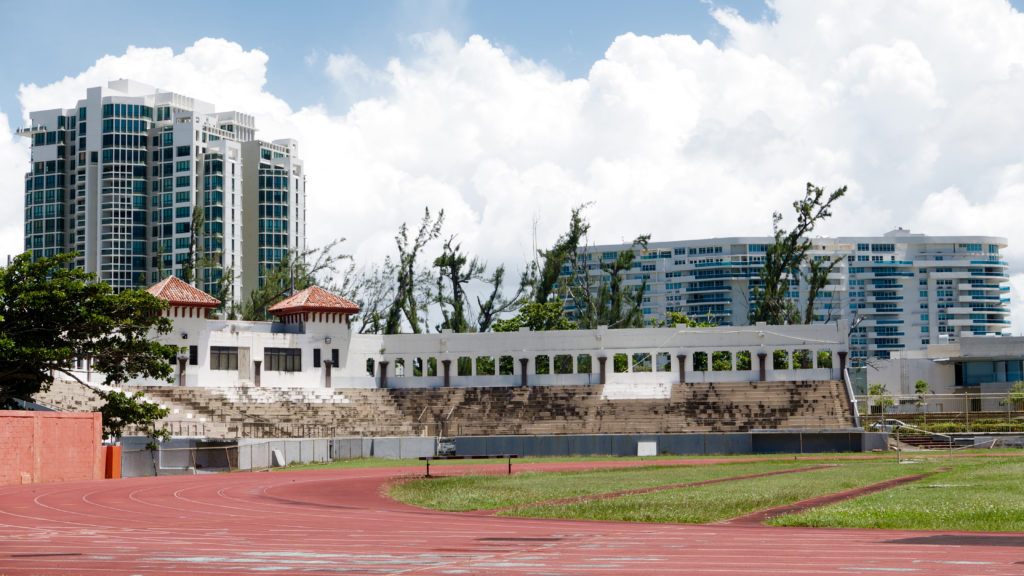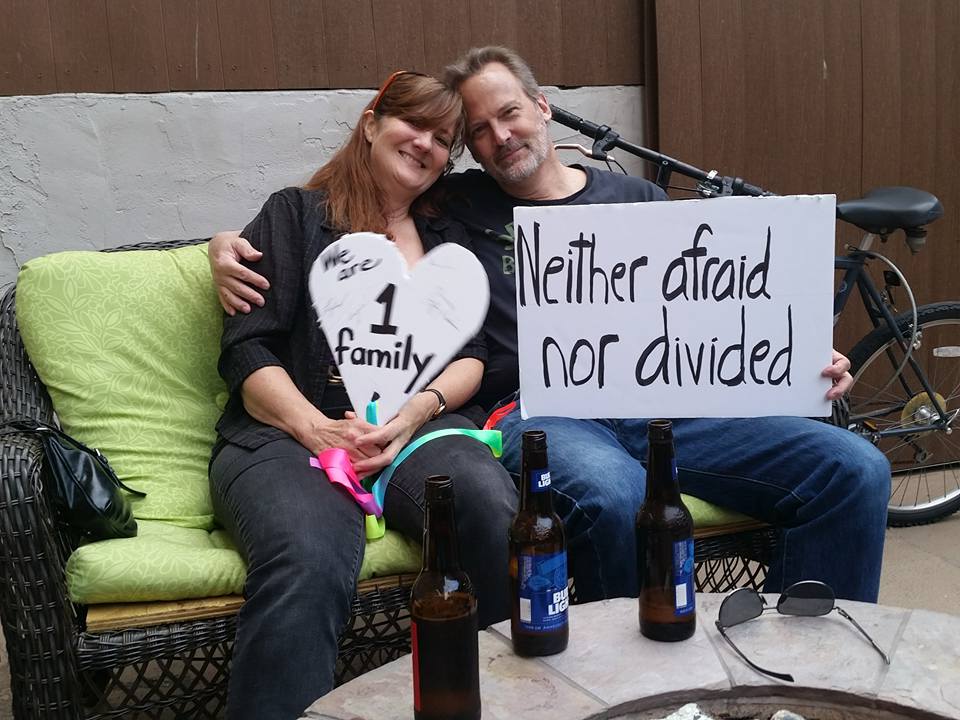During a chance meeting with a survivor of the Pulse nightclub massacre of 2016, I learned that there was a monument to the victims here in San Juan. That made sense, since a 23 of the 49 people slain that night were Puerto Rican. I’ve been involved in the struggle for LGBT rights since the 1970s, so my curiosity was piqued. I set out to find it.
The memorial is located near the entrance to the Sixto Escobar Stadium in San Juan’s Third Millennium Park, not too far from Old San Juan.
The monument consists of seven right angle trapezoids covered with different colored tiles. There’s a small plaque in the center which says it was erected by the City of San Juan, Carmen Yulín Cruz, Mayor. Off to one side is a much bigger plaque that lists names of the people who died. The Puerto Ricans are listed prominently, while the other victims are listed in smaller print at the bottom. A translation of it reads:
Let this tribute to life reinforce our commitment to fight hatred – the product of homophobia – with love, product of respect. Our motto reverberates in all hearts: love is love, is love, is love …
To each side of the monument stand four boxes, on top of which are little containers of artificial flowers. Some of them have a rubber wristband around them commemorating the massacre. I don’t think these boxes and the flowers are a permanent part of the monument. At least I hope not. The boxes are made of painted wood and won’t last long.
The memorial is the first and only public monument in Puerto Rico that commemorates LGBT people. I was glad to find it. However, the monument itself is somewhat underwhelming. The abstraction of the plain, small geometric shapes doesn’t convey much to me. The different colors are no doubt a nod to the rainbow flag and the idea of diversity, but the overall effect lacks the profound emotional resonance that I’d expect of a memorial to the the deaths of 23 Puerto Ricans. To put that number in perspective, if the same percentage of people in the States had been killed relative to the overall population, 2,250 people would have lost their lives.
I also found the location of the memorial puzzling. Sixto Escobar Stadium is a decaying and partially-disused athletic complex that as far as I know has no particular relationship to either the gay and lesbian community or the Puerto Rican government.
The monument isn’t located in an area where people are likely to notice it. During the time it took me to take ten photos of it, I saw no other people pass by, even a crowded nearby beach, Playa El Escambrón, is just a few hundred meters away.
These observations aside, the most significant aspect of the monument is that it exists at all. Full props to Mayor Carmen Yulín Cruz and the municipal government for erecting it. And though I found the overall design and siting disappointing, the memorial had its intended effect on me. I found myself thinking of the massacre, of the victims and their families, and of the vigil in Toledo, Ohio that Lori Seubert and I attended for the victims. The photo below shows us afterward. It also reminded me of the many people who’ve been persecuted–and even killed–simply because of who they love.
There should be more monuments to the Pulse victims and to the other mass shootings that now happen with such depressing frequency. Horrific as it is, the past should not be forgotten.
